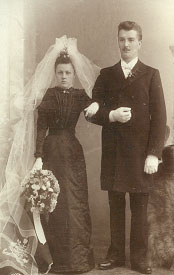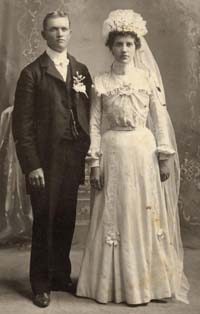A Brief History of the Wedding Dress
The wedding gown is unique. Throughout history, women have tried to make their wedding dress special by personalizing the look or to go along with a theme. Royal princesses have always tried to be most princess-like on their wedding days. In medieval times, when royal marriages were of great political importance and used to seal alliances between two countries, it was necessary for the young bride to look magnificent and to uphold the prestige of her country. Her jewelry was important and used to symbolize her Dowry. During this time, they used as much material as they possibly could. The most expensive fabrics were velvet, damask silk, satin, fur and fabrics woven with gold and silver thread. In days when all fabrics were hand spun woven and dyed and economical use of it was the norm, the skirts would be gathered and full, the sleeves would sweep the floor and trains would fall behind to a length of several meters. Colors would be rich; only the wealthy could afford expensive red, purple and true black dyes. Additionally, the dress would be sewn with precious gems – diamonds, rubies, sapphires, emeralds and pearls – so the bride would glitter and flash in the sunlight.

It is very common even today that a bride copies the look of a celebrity or royalty. The status of a bride was noted in the style and fabrics she wore. A noblewoman would do her best with gems and fur trimmings. A well-to-do middle class woman would aspire to velvet or silk fabrics, and because she could not usually afford mink or sable, she would wear fox, or rabbit fur to impress her friends. The poor bride’s dress would be of linen, or fine wool, instead of the usual coarse homespun, and she would use as much fabric as she could. For an everyday girl, clothes would normally be as sparingly cut as was decent, so a gown with flowing sleeves or a train was a big status symbol. The long train goes in and out of fashion but like everything in fashion, bridal repeats itself. Currently, Vera Wang has introduced a new collection of black gowns and other jewel tones for the bride who is daring enough to step out of the box. Reem Acra continues to redesign the traditional ballgown–some with heavy embroidery and some without but always keeping the skirt modified for the traditional bride.

On a final note, blue was the symbol of purity in the Middle Ages, expressed at wedding ceremonies by a band of blue ribbon worn by both bride and groom. It inspired the “something blue” rhyme that every bride lives by today!


